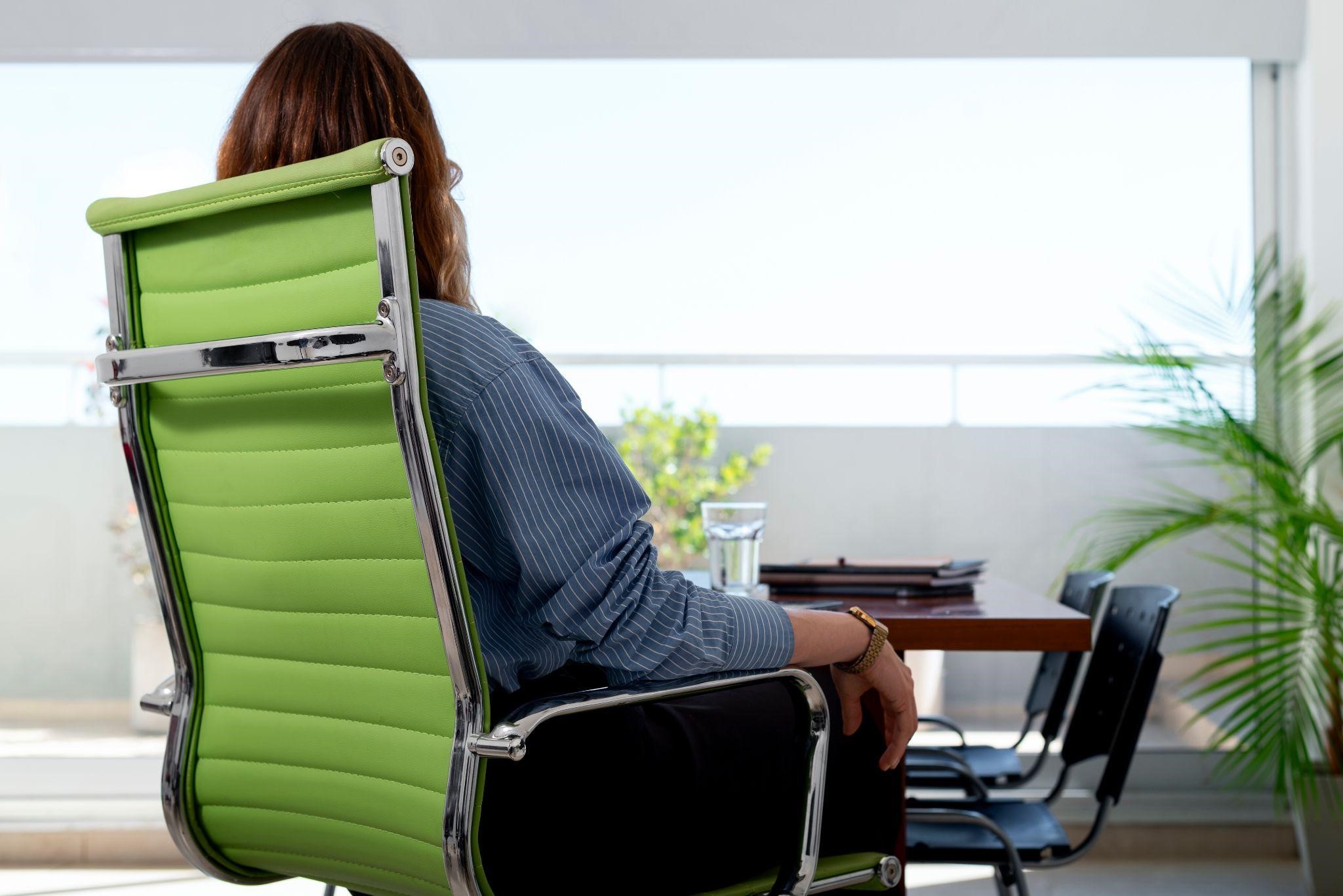The relevance of Musculoskeletal Disorders (MSDs) is exceptionally high among medically vulnerable people, especially in workplaces characterized by a lot of sitting, repetitive movements, and awkward body positions. These disorders include chronic backache, neck strain, carpal tunnel, tendinitis, and other soft tissue overuse that simply make people uncomfortable and suffer from low skill levels at work.
In modern times where the majority of people are employed in desk-related tasks that involve sitting in an office for maximum hours, people develop uncomfortable sitting postures. Hence measures to control these problems associated with poor sitting postures need to be addressed. The value of workplace ergonomics cannot be overstated, and ergonomic work chairs are essential in this regard.
Consequently, ergonomic seating prevents the onset of many chronic diseases by providing adequate support and guiding a relatively straight back. This article evaluates how to prevent ergonomic injuries with the help of ergonomic office chairs and the reasons for the need for the appropriate ergonomic office chair to remain as healthy as possible.
Understanding Musculoskeletal Disorders (MSDs)
MSDs commonly represent a big category of conditions that constitute muscles, nerve tissues, tendons, ligaments, joints, intervertebral discs, and other major systems in the body that support movement. They are caused by repetitive movement, extra strain, poor body positioning, and remaining in one position for a long time. The main MSDs include chronic back pain, neck strain, carpal tunnel syndrome, tendonitis and sciatica, etc.
While there are various contributing factors to MSDs, poor ergonomic settings for many employees remain a core risk factor. Additionally, any employment that has tasks that require the employee to perform the same action repeatedly, like typing and assembly, can warrant some strain if no ergonomic measures are taken.
Social and Economic Effect of MSDs
MSDs have cost implications at the workplace and have made many companies lose a lot of money every year due to diminished results from their employees, absenteeism, and treatment costs focusing on these issues. Employees are also prone to chronic pain and discomfort, which results in dissatisfaction with their work, poor performance, and at times disability.
From a societal point of view, MSDs entail high healthcare costs and lost productivity. It is evident that the pressure on the healthcare systems is very high where there are many patients that get treatment and rehabilitation of these conditions. Similarly, reducing musculoskeletal disorders with ergonomic equipment like ergonomic chairs is not only a concern of workplace safety but wellness in general.
When it comes to social concerns, MSDs are responsible for the rise in medical billings and poor work performance by the population. The strain on public health systems is significant, with millions of people requiring treatment and rehabilitation for MSD-related conditions every year. As such, preventing MSDs through effective workplace ergonomics, including using ergonomic chairs, is not just a matter of individual health but also a critical public health concern.
Why Workplace Ergonomics Matters
A workplace ergonomics is the modification of the workspace parameters such as the desk, the tools, and the work. When ergonomics are properly followed, risks of injuries and discomfort are eliminated as a result efficiency, productivity, and satisfaction of the employees are enhanced. Ergonomics at the workplace can include height-adjustable desks, moving screen keyboards, and moving armchairs.
But still, in most workplaces, ergonomics are normally disregarded. In most cases, the management might provide the staff with ordinary office chairs with no support, or staff members may work in unsuitable conditions that would cause them issues. With time, this carelessness may result in MSDs forming, because the body has been in an un-normal position and tension repeatedly.
The importance of ergonomics in the workplace cannot be overemphasized by stating that it is useful in injury reduction. It aids in developing a more efficient workplace. Comfort and support are the primary concerns for finalized employees, and when this is achieved, effectiveness, involvement, and job satisfaction increase. In contrast, this is not the case with those who have to bear some level of pain or discomfort, as they are at risk of experiencing burnout and exhaustion.
The Science Behind Ergonomic Chairs
An ergonomic chair is a specialized item of furniture created for the purpose of best possible comfort and urging dead straight seating throughout long hours of usage. Unlike normal office chairs which are fixed, ergonomic chairs are adjustable to different ranges and hence can be customized to suit the individual body structure and requirements of different users.
Key Features of an Ergonomic Chair
1. Adjustable Seat Height and Depth:
In an ergonomic chair, the height can be adapted to the height of all users. The height appropriate for the user’s feet is determined when the feet can be placed on a flat surface, with the thighs parallel to the surface. This is important for the blood flow and relieves the lumbar region and the upper sides of the legs. It should be noted that the seat depth should be designed so that there is only a little space between the knee joint and the seat so that the muscle above the leg does not get sore.
2. Lumbar Support:
Lumbar support is one of the vital features of this type of chair since it helps support the natural lower back curve. The lower back, also known as the lumbar area, describes the inward curve of the lower back, which should be preserved to avoid slumping and relieve undue pressure on the lower back discs. Ergonomic office chair with lumbar support allow the spine curves to match the supportive structure, hence relaxing the chances of getting lower back pains.
3. Recline and Tilt Mechanisms:
Ergonomic features are inclusive of mechanisms that allow the users to recline or tilt the angle of the backrest of the chair. These features allow for movement of different parts of the body, which is necessary for avoiding stiffness or pain resulting from long periods of stillness. This is so because the slightly slouched position will help relieve the strain on the lower back and also allow the person to lean back comfortably.
4. Armrest Adjustability:
Support to the arms is important to help minimize strain on the shoulders, neck, and arms through the right height and position of the armrests. The functional parts of such chairs are the armrests, which are adjustable to allow users to set the height and the width to which their arms would be seated so that no strain is put on them, especially during typing or mouse usage.
5. Seat Material and Cushioning:
The specific materials that will be used for the seat are important for comfort as well as breathability. The best chair for lower back and hip pain on the market will commonly come with mesh backs to enhance airflow in hot humid conditions and reduce discomfort from sitting for prolonged periods. However, the standard rule is that the seat cushion should for the most part be firm but pleasant and supportive but should not sink over time.

The Impact of Ergonomic Chairs on Musculoskeletal Health
An ergonomic chair helps with discomfort and pain in the neck and back region. Workers using ergonomic chairs were reported to be in less pain and discomfort, and more productive. Musculoskeletal injuries were reduced when ergonomic equipment was offered, according to research.
Organizations that have adopted full-fledged workplace ergonomics programs record low injuries, improved attendance, and high job satisfaction.
Potential Disadvantages of Ergonomic Chairs
It is also necessary to recognise that there are some disadvantages of ergonomic chair. Some users may get swayed by some features and use them improperly. For example, some users may overadjust a chair but it defeats the principle of how an ergonomic chair should be used. Also, top-quality ergonomic chairs may come at a cost that some people or even companies may not be able to afford.
Users may think that just resting in an ergonomic chair will protect them from the MSDs and will disregard taking breaks, changing their postures, or moving during the day. While it is true that an ergonomic workplace is incomplete without an ergonomic chair, however, it isn’t the answer to all the problems
However, in spite of these disadvantages of ergonomic chair, the overall advantages resulting from the installation of a properly constructed ergonomic chair are in most cases, higher than wasteful disadvantages. Providing the right support and promoting good posture, ergonomically designed chairs are very effective in the prevention of musculoskeletal problems and enhancement of general health at the workplace.
Criteria for Choosing the Right Ergonomic Chair
An ergonomic chair goes a long way in ensuring comfort and preventing posture-related injuries. Because these products are so widely available, buyers are encouraged to know essential points that should be checked on and how they would help meet the buyers’ needs.
Considerations When Selecting an Ergonomic Chair
1. Body Size and Shape Compatibility:
Not all ergonomic chairs fit everyone. The chair must match their users’ height, weight, and dimensions. For instance, if one is tall, they will require ordering a chair for a high back and deeper seat. On the other hand, short people will require deep-seated low, low-bottomed chairs. Using a badly sized chair, whether oversized or very small, will render even the best chair for lower back and hip pain useless.
2. Specific Needs:
Think of any requirements you might have that might be for example previous injuries such as back injuries or the style of fabric that might have hurt your skin. Some people need such features as a headrest or hypoallergenic office chair. One must select a chair that solves such problems and improves the general health of the person using it.
3. Work Environment:
The type of work and the environment you are employed in are crucial in choosing the most suited chair. For instance, in the collaborative work setting or when you are very active, you may want to do it with a chair with some swivel motion and rolling wheels. When one works for long hours staring at the computer, an ergonomic office chair with lumbar support and height-adjustable armrests will work better.
4. Budget Considerations:
The pressure to choose the least expensive option is understandable. However, the money spent in owning a good ergonomic chair is worthwhile as chronic back problems may cost even more. The main reason for getting an ergonomic chair is that it is beneficial in the long run.
5. Trial and Testing:
If possible, sit down on various chairs before purchasing one. When you try on a chair and fidget to find the perfect settings that work for you, it becomes easier to determine whether it is the right one. Many ergonomic chair providers will usually let you ‘borrow’ the chair for a day or so to see how you use it.
The Role of Ergonomic Chairs in Preventing MSDs
The use of ergonomic chairs is beneficial in doing away with musculoskeletal disorders as they encourage optimal seating, offer sufficient backing and cause minimal pressure to the body parts. When these chairs are properly used, they can help ward off and delay the onset of conditions that result in lower back ache, neck strain and upper body musculature strain that is more common with long sitting positions.
How Ergonomic Chairs Prevent MSDs:
Promoting Proper Alignment:
Ergonomic backrest chairs are intended to support the correct spinal position of the user in order to avoid any disruption in the spine. Because of lumbar support and straight back posture, these chairs also help prevent people from developing chronic back problems.
Reducing Pressure Points:
Owing to the fixed design of conventional chairs, users may pinch their thighs and buttocks as well as experience a restriction of blood flow due to the constrained design making it uncomfortable for them. Correctly oriented armrests and adequately arranged seat depth can also protect the shoulders and neck from most static muscle strains.
Encouraging Movement:
Most of the ergonomic chairs for office work come with types and recline features that promote mobility like tilt and seat recline. Such systems prevent stiffness and encourage blood flow thus reducing fatigue and the risk of development of conditions like deep vein thrombosis (DVT).
Supporting a Holistic Approach to Ergonomics:
The use of an ergonomic chair, adjustable desks, and regular breaks helps to further decrease the threat of MSD among the workers since all these form a single unit aimed at promoting the well-being of the employees.

Introducing OdinLake: Pioneers in Ergonomic Furniture
As the significance of ergonomic chairs increases, more and more companies such as OdinLake emerge with the right ergonomic chairs which are well-designed to suit different users. By developing innovative yet practical, beautiful, and sustainable products, OdinLake seeks to improve the health and comfort of users at work.
OdinLake’s Commitment to Ergonomics and Sustainability
OdinLake strives to design health-preserving furniture without compromising quality and good working practices. They believe an ergonomic chair is not just an accessory of the office space but a very important component of one’s overall health and productivity.
For people who care about it, OdinLake has non toxic office chair that are free of harmful toxins and are made out of environmentally friendly materials. This goal for environmental sustainability is appreciated since it gives them a competitive edge as OdinLake ergonomics helps your back while being considerate of the environment.
Recommended Ergonomic Chairs from OdinLake
OdinLake possesses a variety of ergonomic chairs which determines that the company understands the necessity of modern office workers. Below are some of their most preferred models to aid in the prevention of MSDs and the improvement of comfort in the working environment.
1. OdinLake Ergo Pro 633:
OdinLake Ergo PRO 633 is a top-line chair for this category as it has the most functionalities while looking refined. This chair is perfect for people with lower back and hip pain. It has adjustable support for your lower back and seat depth, plus a high backrest and headrest to support your entire spine and neck. The armrests can move in many directions, reducing strain on your shoulders and wrists.
2. Ergo UPGRADE 518
Before we move on, let’s not forget the Ergo UPGRADE 518. This chair is designed for comfort and practicality. It has a mesh material that keeps you cool and a special system to manage wires. It’s great for long work hours or intense gaming sessions when you need to stay cool and focused.
Ergo MAX 747
There is also the Ergo MAX 747, which is a strong model capable of supporting up to 350 pounds. This chair has three settings for back support, making it very durable and the best choice for those who need strong back support. It’s like a protector for your spine, keeping you comfortable all day no matter what you’re doing.
Creating an Ergonomic Work Environment
However, along with buying an ergonomic chair, it is vital to understand how other working elements are structured to prevent and manage the risk of MSDs. Workplace ergonomics means more than simply placing a comfortable office chair; it is the design of the working space, including the desk’s positioning, monitor, keyboard, and all other attachments, that enhances appropriate positioning and relieves stress.
Tips for an Ergonomic Workspace:
- Monitor Placement:
Place the computer monitor at eye level so that the top of the screen reaches a little above eye height. This position helps to avoid neck strain that may be caused by looking too high above the head. Sit approximately an arm away from the monitor to prevent straining the eyes and use about a comfortable visual distance such that the eye floats to the top of the printed text. - Keyboard and Mouse Positioning:
The keyboard and mouse should flex both the forearms to a 90-degree angle while typing or using the mouse. Such positioning will help to ensure that each individual’s arm does not bear strain that may lead to injury in the long run. You may also want to invest in a comfortable keyboard and a mouse if you prefer it. - Desk Height:
When typing, the height of the desk should allow for the elbows to be bent at a right angle while the wrists remain in a straight line along the neutral axis. A desk that is either too high or too low can put the shoulders and wrists under too much strain. Height adjustable desks take care of this problem. - Footrest:
If your bottom is touching the chair but your feet are not flat on the ground, you may wish to use a footrest. This low-cost feature also helps avoid excessive pressure on the thighs and the lumbar region. - Regular Breaks:
While it is appreciated that one’s setting is as ergonomic as possible, one should also get away from such a setting regularly and move about. Sitting for long periods, even in the most comfortable ergonomic chair, causes stiffness or discomfort. Every 30 minutes or so, take a brief break to stand, stretch, and walk around.
The Importance of Workplace Ergonomics
Designing working spaces is not only about eliminating discomfort; it is also about ensuring the good health and welfare of the employees in the long run. Adapting to an ergonomic workstation along with correct body postures and movements can aid in alleviating most of the risks associated with musculoskeletal disorders.
Remember that ergonomics is not just the measurement of physical dimensions but also managing the work, including psychological aspects. Adherence to these principles makes it possible for the ergonomics of a specific working place to be enhanced in terms of openness and health or its performance for you or your employees.

Conclusion
MSDs result in injuries for all those in the same posture for prolonged durations, whether in a traditional or home office setup. Physical stressors such as bad postures, lack of proper support, and sitting for too long often result in a variety of pains and aches, which, in the end, will lower one’s overall productivity and standard of living. The good news is that nothing is more efficient than high-quality ergonomic chairs when it comes to preventing these issues.
The purpose of an ergonomic chair is to maintain the body’s natural posture, ease the tension at the back, and encourage healthy sitting habits. Proper selection of the chair, alongside its incorporation into an appropriate ergonomic workstation, can prevent MSDs and enhance the comfort of work.
With various ergonomic chairs on offer, OdinLake caters to those looking for an office chair that helps with lower back and hip pain, as well as those who prefer a more environmentally friendly approach. A chair can be chosen to support the exact tasks, body size, environment, and restrictions such as budget. Visit OdinLake today to find the chair that best suits your needs!


